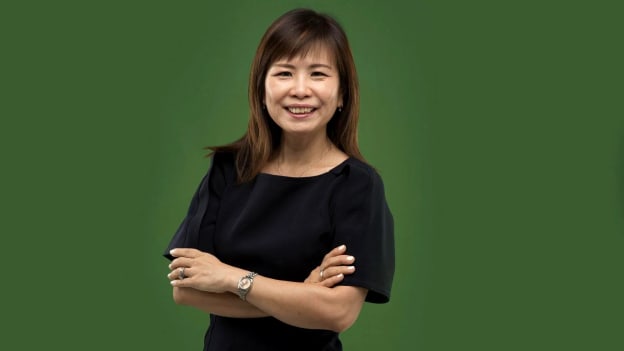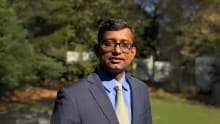Closing the gap in semiconductor talent: Micron's Sim Cher Whee on building the talent pipeline

It's hard to find good engineers and even harder to keep them these days. But with global demand showing no sign of slackening in the near or mid term, big manufacturers can't just look at existing talent pools any more. They have to plan far ahead – building tomorrow's talent pool today, and wherever possible, creating a pipeline that stretches out to supply the company's future.
People Matters met with Sim Cher Whee, head of global talent acquisition, mobility and immigration at semiconductor giant Micron, at Micron's new facilities in Singapore to ask her about the talent situation in the industry today and what's working to build that critical talent pipeline. Here's what she shared from the perspective of a long-established multinational.
What's the talent situation like in the semiconductor industry at the moment?
Firstly, it's important to understand that we have to take a very long-term view on the talent situation. From a market lens we understand that semiconductor is always cyclical, but when we think about talent, we don't follow that cycle, because from the lens of pipelines and pathways, you need time to get there. You can't just implement a solution and get your results tomorrow.
So, we need to think far ahead. Last year, Deloitte published a report that projected the semiconductor industry will need an additional 1 million skilled workers by 2030. If you think ahead, that's less than a decade away, and it's a 50% growth in the workforce. You can see that the supply and demand is going to be very lopsided.
Also last year, Micron announced that we are investing US$150 billion in our global manufacturing and R&D capabilities over the next decade. This is going to be a huge part of the supply and demand challenge, and as a company, we definitely have to make the building, shaping, expansion, and diversification of talent a priority. But it can't be done just by us alone. We have to do it together with the whole industry, the educational institutions, the government. And we have to take a thought leadership approach, a catalyst approach that will help bring others together for this effort.
Based on the Deloitte and other reports, there's a particularly enormous talent gap in the US where Micron is based. Can you share a bit about how you're building the pipeline there?
Just this year we announced the formation of the Northeast and Northwest University Semiconductor Networks, which is a dual initiative where we are working with more than 50 universities in the US. Our aim in forming these networks is to help shape the university curriculum in a way that they can train young talent in the skills most relevant to the industry.
Now for initiatives like this to be really successful, it must be able to scale and you must have quality. That's the guiding principle by which we design our talent pipeline and the career pathways as a whole.
From a scalability perspective, we have to look at the capacity of programmes, such as our internship programmes. We have to design internships so that they don't just give basic work exposure, we also have to create an internship experience that's so positive these students want to stay on in the industry. And it's not just internships – we have to re-imagine apprenticeship programmes, because we're not just focusing on engineers, we need to bring up technicians as well – that's the community college group in the US context.
From a quality perspective, the curriculums we are shaping must really be able to produce talent who has the skill, the knowledge, and also the right mindset and capabilities. And one component of that is the quality of educators. This is very important, because semiconductor manufacturing comes with very old baggage, a kind of stigma and assumption around the job being very manual and without much potential to advance. But obviously this is no longer the case, and we need educators to help update students about the new reality of what the industry has evolved into. So we actually create programmes to bring educators on site and show them what we do, engage them so that they can pass that level of excitement on to their students who will then perhaps make the decision to study the curriculum, and then join the industry, and hopefully stay on in this profession.
We've also been taking these initiatives global. Another one we announced this year is called UPWARDS for the Future, which is a partnership of universities across the US and Japan to develop top of the line semiconductor curriculums. The power of this initiative is that Micron isn't doing it alone. We actually brought Intel and other industry partners together with these universities, the US government, and the Japan government.
How long does it take to establish huge multi-party initiatives like these?
Believe me, it really wasn't easy. A lot of the relationships that made these possible happened over many years: decades of consistently demonstrating how serious we are as a company, how important the wider ecosystem is to us, how much we are willing to invest and put our own efforts and resources in. For example, the Northwest network took less than three months to come together – but many of the universities that joined this initiative had already been collaborating with us for years. And we leveraged many other long-standing relationships with industry associations, government bodies, leading figures. Putting MOUs and agreements together – that takes six months, nine months, but behind the scenes is almost fifty years of building deep relationships with all the industry stakeholders.
What was it like at the start, when Micron first began to develop and introduce these programmes to build the talent pipeline?
As an example, we started an industry scholarship programme in partnership with Singapore's Economic Development Board just over 11 years ago. At the time, we had to make a very strong case that we really needed some kind of programme to retain talent in the semiconductor industry in Singapore and keep it from leaking away to other industries or even other countries.
Micron was the first company and one of a very small number of private companies to take the leap and participate in this scholarship programme, and in the first year there was so much to learn. How do you select the candidates? How do you market the programme and the internship, how do you even communicate to the students about this opportunity? Because you must bear in mind that students have a lot of choices and they are getting a lot of information – you are competing with everything from their parents' advice to the schools' advice to peer pressure, and you are facing obstacles like the stigma I mentioned earlier.
Today, looking back, it's such a point of pride for us to have done that, and it's elevated our relationship with the Economic Development Board so much. And having this background also positions us to keep moving forward. Just a few weeks ago we signed an agreement with five polytechnics in Singapore to offer scholarships to students keen on semiconductor, and to provide them with a very targeted curriculum that will let them move seamlessly into the industry when they graduate. I mentioned earlier how we need to not just look at engineers, but also ensure that we are bringing up the technicians of the future as well – this initiative is supporting that part of the pipeline.
Do you find that any specific aspects of these initiatives are likely to give greater return on investment – to be particularly effective in filling the talent gap?
I think the focus on skills is really changing the way we think about talent.
When we start to talk about having a skill-based organisation, that influences everything about how we view scalability in our programmes and how we make those programmes more competitive.
For example, when we work with students who come to us for internships or apprenticeships, we focus on what their skill sets are. We really go down to the most basic definitions and how these have changed: for example, we help them to realise that a skill like problem solving is no longer about how to just do diagnostics. Instead, it becomes the ability to really go deep into certain methods, certain approaches, certain ways of resolving an issue.
And it's not just about technical skills any more. In Singapore, we have multi-disciplinary requirements for the curriculum, and I think that's very powerful. We need to build skills like leadership, communication skills, interpersonal skills, into the curriculum, so that the students will be much more prepared for the workplace.
Really, when we think about skill, it's no longer about which university you come from or about having to get the right degree. It's all about demonstrating your ability to learn. When you think about the skills needed for a role, you unpack it, and that actually helps you to reach out to a much bigger base. And this is something I'm championing because a lot of companies have very narrow approaches to evaluation or selection.
So it's not about specific initiatives or specific aspects of the initiatives. It's the whole framework, the whole mindset, that will enable us to have that workforce we need.















